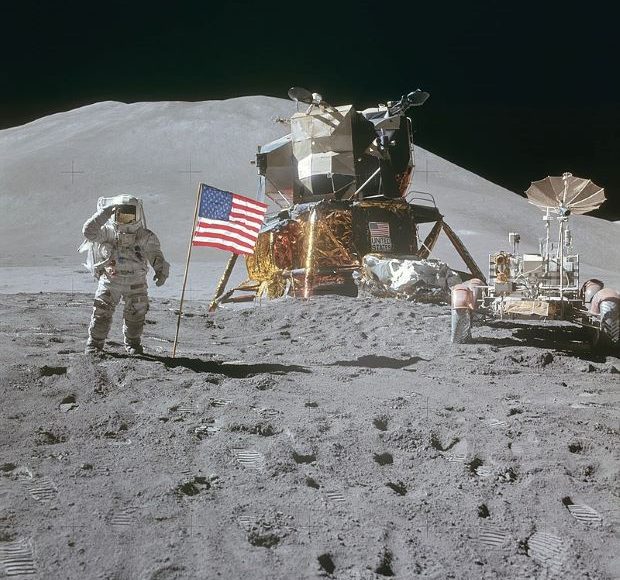July 31 in History
1971 – Apollo 15 astronauts become the first to ride in a lunar rover on the Moon
On this day in 1971, Apollo 15 astronauts, Lunar Module Pilot James B. Irwin and Commander David Scott first used the four-wheeled battery-powered Lunar Roving Vehicle to extensively explore the Moon’s surface, in particular the Hadley-Apennine site.
Apollo 15 (July 26 – August 7, 1971) was the ninth crewed mission in the United States’ Apollo program and the fourth to land on the Moon. It was the first J mission, with a longer stay on the Moon and a greater focus on science than earlier landings. Apollo 15 saw the first use of the Lunar Roving Vehicle.
The mission began on July 26 and ended on August 7, with the lunar surface exploration taking place between July 30 and August 2. Scott and Irwin landed near Hadley Rille and explored the local area using the rover, allowing them to travel further from the lunar module than had been possible on previous missions. They spent 181⁄2 hours on the Moon’s surface on four extravehicular activities (EVA), and collected 170 pounds (77 kg) of surface material.
At the same time, Command Module Pilot Alfred Worden orbited the Moon, operating the sensors in the scientific instrument module (SIM) bay of the service module. This suite of instruments collected data on the Moon and its environment using a panoramic camera, a gamma-ray spectrometer, a mapping camera, a laser altimeter, a mass spectrometer, and a lunar subsatellite deployed at the end of the moonwalks. The lunar module returned safely to the command module and, at the end of Apollo 15’s 74th lunar orbit, the engine was fired for the journey home. During the return trip, Worden performed the first spacewalk in deep space. The Apollo 15 mission splashed down safely on August 7 despite the loss of one of its three parachutes.
The mission accomplished its goals but was marred by negative publicity the following year when it emerged that the crew had carried unauthorized postal covers to the lunar surface, some of which were sold by a West German stamp dealer. The members of the crew were reprimanded for poor judgment, and did not fly in space again. The mission also saw the collection of the Genesis Rock, thought to be part of the Moon’s early crust, and Scott’s use of a hammer and a feather to validate Galileo’s theory that when there is no air resistance, objects fall at the same rate due to gravity regardless of their mass.
-Wikipedia
Photo Caption – Astronaut James B. Irwin, lunar module pilot, gives a military salute while standing beside the deployed US flag during the Apollo 15 lunar surface extravehicular activity (EVA) at the Hadley-Apennine landing site. The flag was deployed toward the end of EVA-2. The Lunar Module (LM) ‘Falcon’ is in the centre. On the right is the Lunar Roving Vehicle (LRV) –Astronaut David R. Scott, Apollo 15 commander/NASA



Comments are closed, but trackbacks and pingbacks are open.